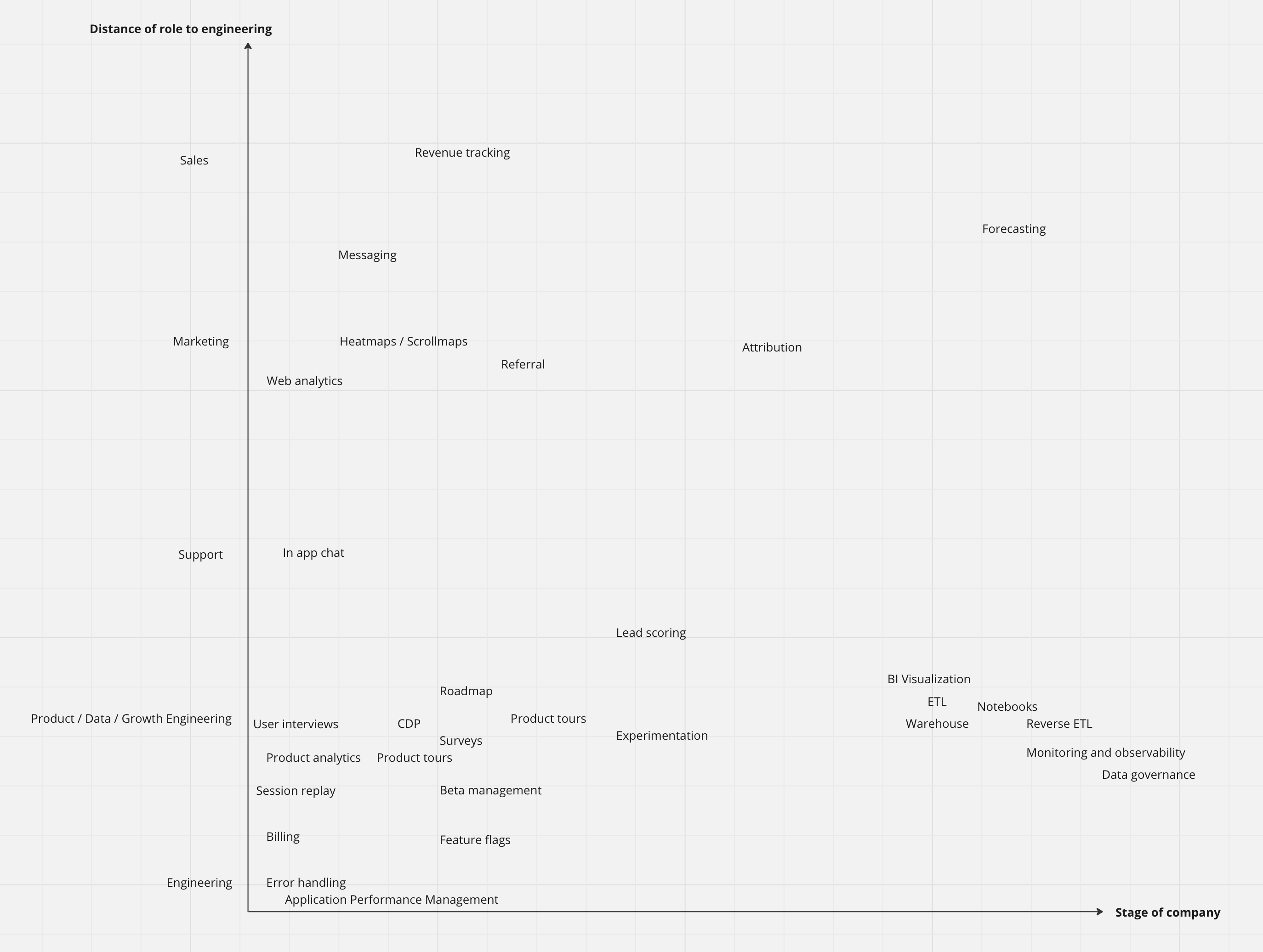Providing all the tools in one is a core part of our strategy.
Shipping them in the right order is key to a fast return on investment from every new product.
How to pick which feature within an existing product to build
In the early days, you'll be shipping the main few features that your category of product has as standard. In product analytics, this would be something like (1) capturing events, (2) trends (3) funnels (4) retention and (5) person views.
Once this is done, you'll get a stream of feature requests and bug reports from users. You can't go too wrong if you listen to these and by default prioritize those that help us get in first, first. For example, with our data warehouse, we picked multi-tenant architecture because we wanted startups to be able to get started for free or very little initial cost - even though a single tenant approach would have given us an MVP faster. Sometimes, if sales are asking, you may choose to prioritize a feature for a big customer earlier, but you should never do this when you wouldn't have shipped it at some stage anyway.
Later on, you can then innovate several ways:
- unpeel your product - you start with the software, then offer API access, then offer better API access, then infrastructure (if you are feeling brave) - by default, start with this reminder: charge for API access appropriately, speak to Annika for help figuring this out. Doing this increases our luck surface area (it means your users will find new use cases).
- features more specific to our ICP (make it more engineering-y, more customization, more power)
- integrate it with our other products (either feature them in the product you just built, or feature your product in theirs)
How to pick new products
Products we build into the platform must:
- Be a product that our ICP could use, and there already is a $1bn competitor in the market (ie a company with around $100M in revenue). This guarantees what you build will be useful.
- Be something that you are very excited to build. People pursuing their interests get more done, go much further and execute to a better standard.
Ideally, but not necessarily, products we build should:
- Help customers to build more successful products. This doesn't just mean writing code, it means commercial stuff too.
- Help us to offer all the tools in one - help us as quickly as possible cover the "major" pieces of software that every startup uses
- Help us to get in first - some tools are adopted earlier in the customer lifecycle than others. Starting with these avoids customers moving to competitors' products then us having to migrate them over.
- Help us to be the source of truth - some products are great at providing additional data, or working on top of the existing data PostHog stores. This means your product will probably help make multiple other products more powerful.
- Increase our luck surface area - some products have more upside than others, for example, API access may yield surprising results compared to a super narrowly scoped new product like a cookie banner product
- Be very easy to integrate and turn on for existing customers. For example, users can enable the product without a code change
- Have crappy competitors - successful companies but horrible products and/or sales experience

At earlier stage companies, technical founders will do every role, so tools traditionally used by those further from engineering (i.e. support) are likely to get usage if built into PostHog's platform. In later stage companies, we need - for now - to remain closer to engineering tools. Do not be afraid of shipping non-traditional "engineering" oriented products.